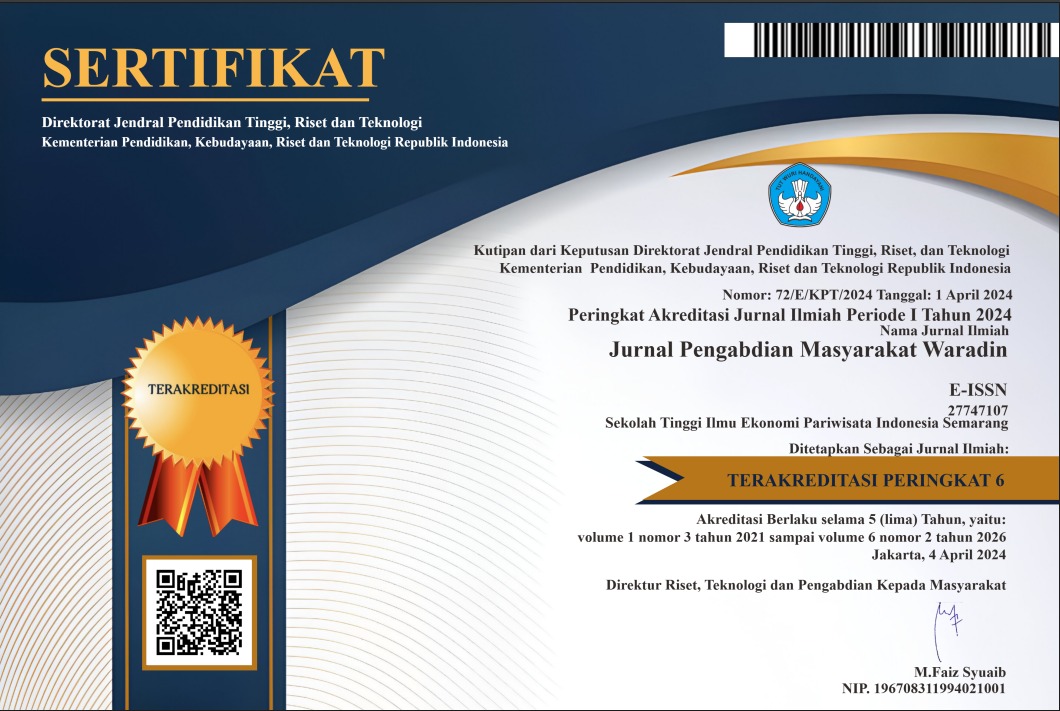Penerapan Kolam Bundar sebagai Alih Fungsi Kolam Tanah pada Kelompok Pembudidaya Ikan Tawar (POKDAKAN) Suko Raharjo
DOI:
https://doi.org/10.56910/wrd.v4i3.399Keywords:
catfish seeds, land saving, round pondAbstract
Catfish cultivation using a ground pond lined with plastic from used salt ponds carried out by the Suko Raharjo freshwater fish farming group (POKDAKAN), has several disadvantages, namely this type of pond is easily damaged, more difficult to clean, dirt and leftover catfish feed easily stick to the soil and plastic, so that the pond becomes dirty and smelly. This can cause disease in fish and disrupt the quality of pond water. Ground ponds lined with plastic from used salt ponds are not ideal for regulating water quality. So that it can cause stress to fish and disrupt their growth. The purpose of this activity is to increase catfish productivity, by using round ponds, which are more effective and efficient in both land and water use. The results achieved from this activity, catfish development was recorded to have increased significantly with the use of round ponds, where the number of catfish that died could be minimized by up to 5% compared to using ground ponds.
References
Astawan, M. (2008). Sehat dengan hidangan hewani (1st ed.). Penebar Swadaya.
Hendriana, A. (2010). Pembesaran lele di kolam terpal. Penebar Swadaya.
Kementerian Kelautan dan Perikanan. (2023). Kelautan dan perikanan dalam angka tahun 2022: Marine and fisheries in figures 2022.
Primawestri, M., & Sumardianto, K. R. (2023). Karakteristik stik ikan lele (Clarias gariepinus) dengan perbedaan rasio daging dan tulang. Jurnal Teknologi dan Ilmu Perikanan, 5(1), 44–51.
Supono, S. (2015). Manajemen lingkungan untuk akuakultur. Plantaxia.







